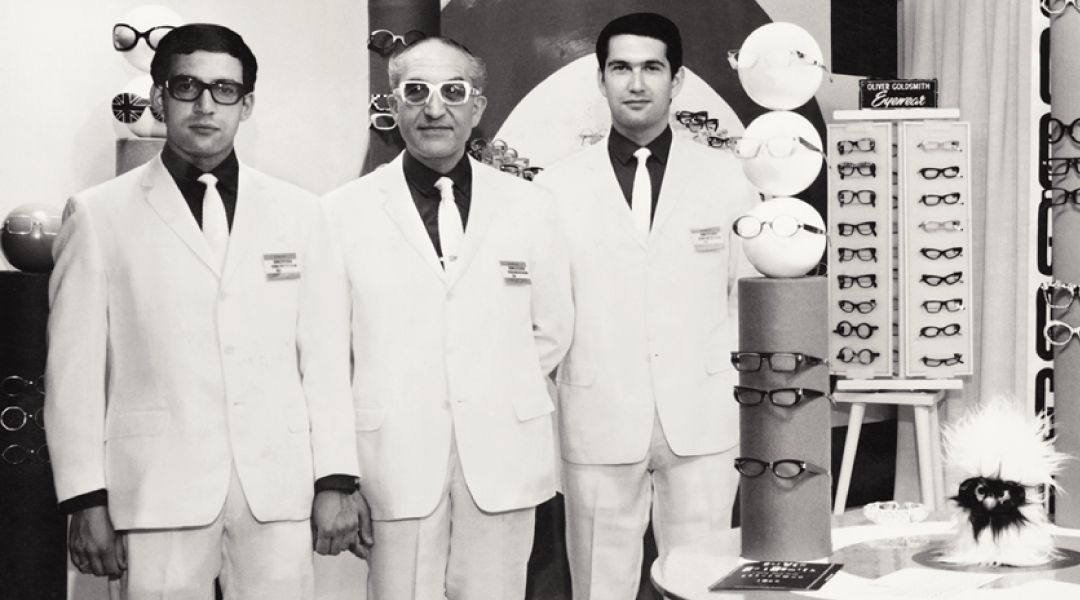Oliver Goldsmith's Legendary Impact on Eyewear Fashion: A Lasting Legacy

Read time: 5 minutes
Oliver Goldsmith, a legendary figure in the eyewear industry, revolutionized the world of glasses and sunglasses with his innovative designs and unparalleled craftsmanship. His groundbreaking approach to eyewear fashion transformed glasses from a functional necessity into a chic and desirable accessory, setting the stage for the modern eyewear landscape. As an optometry shop dedicated to excellence in style and quality, Urban Optiks Optometry in San Diego proudly carries on Goldsmith's legacy, offering an extensive array of fashionable frames that reflect his enduring influence.
Let's look into the fascinating history of Oliver Goldsmith's impact on eyewear fashion and how his timeless creations continue to inspire current designs, solidifying his indelible mark on the industry.
A Brief History of Oliver Goldsmith: The Pioneer of Eyewear Fashion
Oliver Goldsmith's journey into the world of eyewear began in 1926 when he started his company in London, England. Although glasses were primarily considered functional items at the time, Goldsmith changed the perception of eyewear by introducing groundbreaking designs that blended fashion and functionality. During the 1950s and 1960s, his eyewear creations gained widespread popularity among Hollywood icons, fashion royalty, and other notable figures, which catapulted the brand to international fame. Over the years, the Oliver Goldsmith brand continued to set industry standards and introduced many innovative styles, leaving an enduring impact on the world of eyewear fashion.
Iconic Celebrity Endorsements: Goldsmith's Cultural Influence
Oliver Goldsmith's designs captured the hearts of numerous celebrities, who proudly wore his creations on and off-screen. These iconic endorsements played a significant role in propelling the brand into the spotlight and solidifying its place in fashion history. Among the prominent personalities who donned Goldsmith's eyewear, the following stand out:
- Audrey Hepburn: Known for her timeless style and sophistication, Hepburn sported Goldsmith's sunglasses in the 1966 classic film "How to Steal a Million." This association cemented the brand's connection to elegance and glamour.
- Michael Caine: The legendary actor became synonymous with Goldsmith's "Consul" frames, which he wore in several films, including "The Ipcress File" and "Funeral in Berlin." This collaboration further established Goldsmith's influence on mid-century fashion.
- Grace Kelly: Revered for her impeccable taste, Princess Grace Kelly of Monaco wore Goldsmith's frames during her reign as a fashion icon, boosting their visibility and prestige.
- The Beatles: The iconic band members were often photographed wearing Oliver Goldsmith sunglasses during the height of their fame, enhancing the brand's cultural reach and appeal.
These celebrity connections helped solidify Oliver Goldsmith's status as a trendsetter in eyewear fashion and amplified his influence on the industry.
Signature Styles: Goldsmith's Timeless Creations
Oliver Goldsmith's eyewear designs were renowned for their distinctive shapes, innovative materials, and meticulous craftsmanship. Some of his most celebrated styles include:
- The "Lord": A quintessential Goldsmith design, "The Lord" featured an angular butterfly shape with oversized lenses, exuding an aura of glamour and drama. This style was favored by the likes of Audrey Hepburn and quickly became a must-have accessory in the 1960s.
- The "Manhattan": Sporting a distinctive cat-eye shape, "The Manhattan" was another iconic design that gained widespread fame, particularly after Audrey Hepburn wore a pair in "Breakfast at Tiffany's." This style remains a beloved and sought-after classic in the eyewear world.
- The "Consul": A symbol of refined sophistication, the "Consul" became one of the most famous Goldsmith designs thanks to Michael Caine's iconic portrayal of secret agent Harry Palmer. Square-shaped with sturdy acetate construction, this style continues to influence modern eyewear trends.
With an acute understanding of trends and an unwavering commitment to quality, Goldsmith played an instrumental role in shaping the eyewear landscape and setting new benchmarks in design.
Goldsmith's Legacy in Modern Eyewear Fashion
Today, Oliver Goldsmith's influence on eyewear fashion remains palpable. His groundbreaking approach to design, along with his emphasis on quality craftsmanship, has left an indelible mark on the industry. Many contemporary eyewear brands, including those available at Urban Optiks Optometry in San Diego, continue to be inspired by his vision for fashion-forward, high-quality eyewear.
As a result, Goldsmith's contributions to the world of eyewear can be found in various modern collections. For example, Oliver Goldsmith Eyewear, the contemporary incarnation of the brand, carries on the founder's legacy by reissuing some of the most iconic designs in limited-edition collections. This allows fans of the brand and new generations alike to appreciate and enjoy the timeless designs that revolutionized the world of eyewear.
In addition to his own brand's continued success, Goldsmith's influence can be seen in the designs of many other eyewear companies, which often pay homage to his iconic styles and commitment to craftsmanship. As a result, the spirit of innovation and dedication to quality that characterized Goldsmith's work remains a driving force within the industry.
The Importance of Celebrating Goldsmith's Impact on Eyewear Fashion
Acknowledging Oliver Goldsmith's significant influence on eyewear fashion highlights the importance of visionaries who propel the industry forward. By combining functionality with style and making eyewear a fashionable accessory, Goldsmith helped shape the way people perceive and interact with glasses today.
Celebrating his achievements serves as a reminder of the power of creativity, innovation, and craftsmanship in the world of eyewear fashion. Moreover, it highlights the importance of carrying on Goldsmith's legacy through optometry shops like Urban Optiks Optometry in San Diego, which continue to offer high-quality, stylish frames that reflect Goldsmith's enduring influence.
Embrace Oliver Goldsmith's Vision with Urban Optiks Optometry
Oliver Goldsmith's legendary influence on eyewear fashion has left an enduring legacy that continues to shape the industry today. His innovative designs, pioneering approach, and commitment to craftsmanship transformed eyewear from a mere functional necessity into a stylish accessory. At Urban Optiks Optometry in San Diego, we recognize and admire Goldsmith's groundbreaking approach to eyewear, curating a collection of fashionable frames that embody his timeless vision.
Are you ready to discover the perfect pair of glasses that blend style, quality, and comfort? Schedule an appointment with Urban Optiks Optometry in San Diego today. Let our skilled professionals guide you through our extensive range of on-trend frames and help you find the perfect luxury eyewear that not only meets your vision needs but also captures the essence of Oliver Goldsmith's lasting impact on eyewear fashion.
Share this blog post on social or with a friend:
The information provided in this article is intended for general knowledge and educational purposes only and should not be construed as medical advice. It is strongly recommended to consult with an eye care professional for personalized recommendations and guidance regarding your individual needs and eye health concerns.
All of Urban Optiks Optometry's blog posts and articles contain information carefully curated from openly sourced materials available in the public domain. We strive to ensure the accuracy and relevance of the information provided. For a comprehensive understanding of our practices and to read our full disclosure statement, please click here.


















